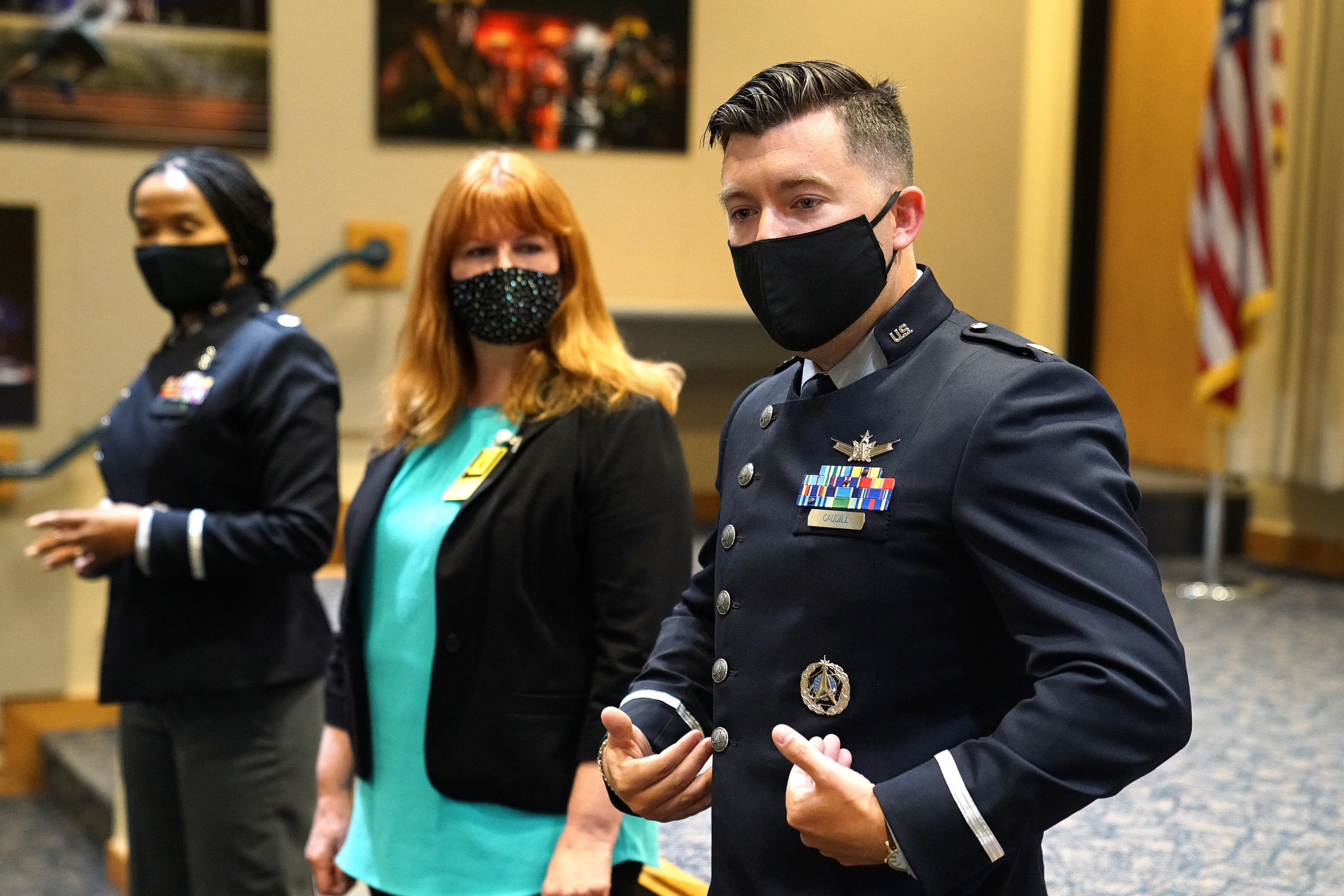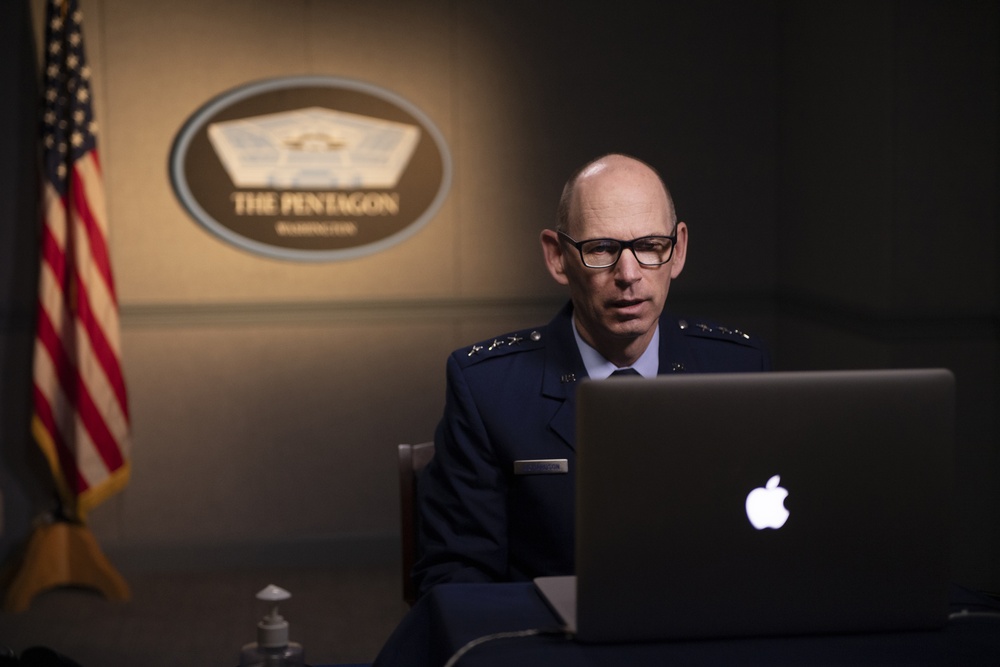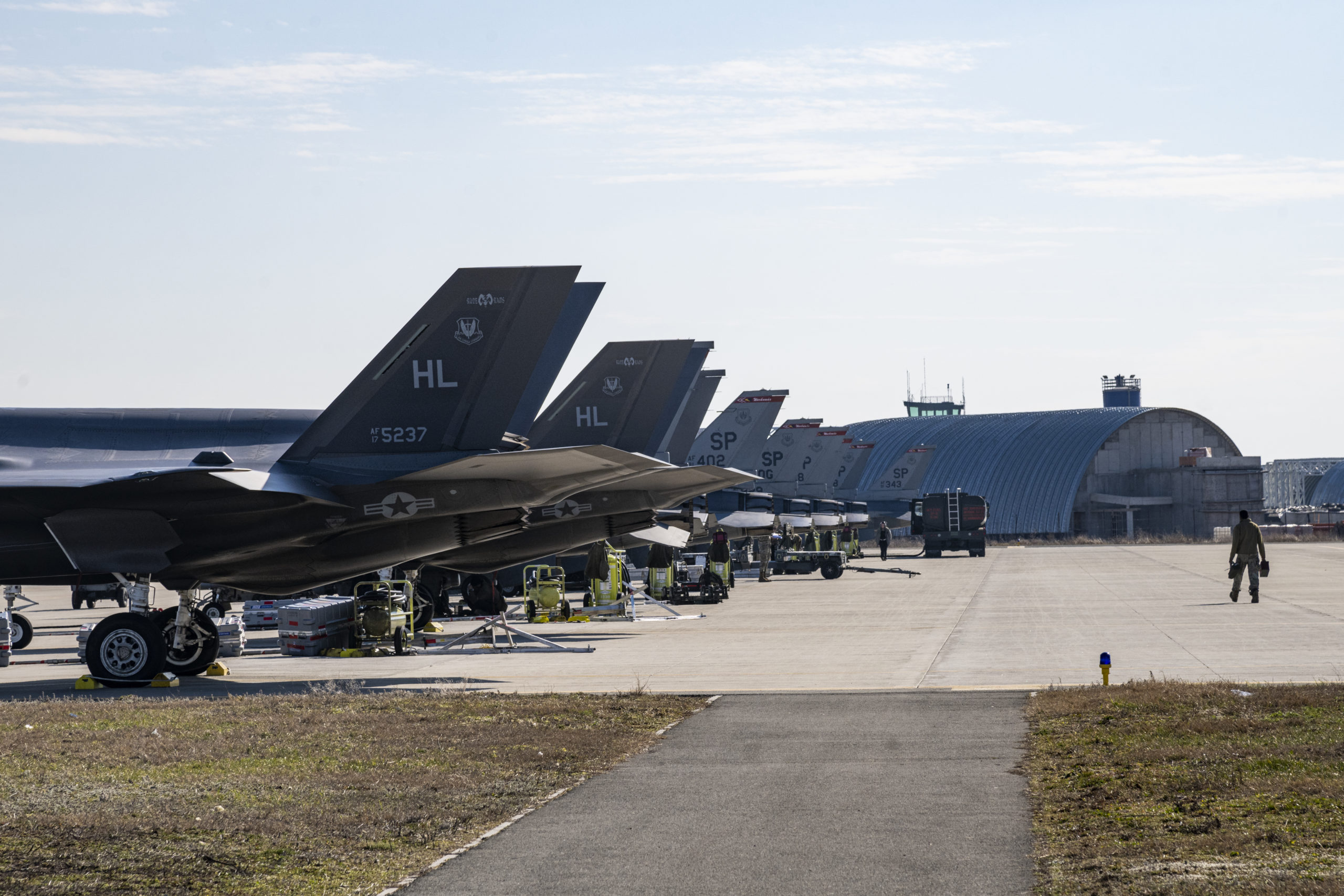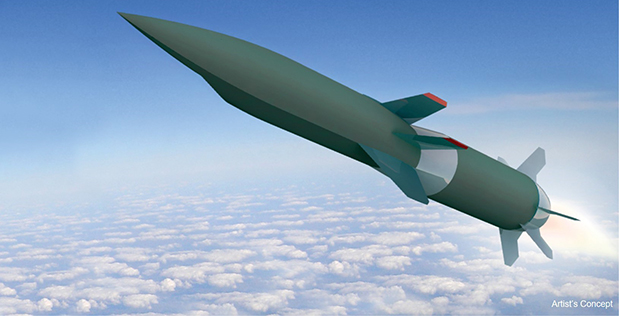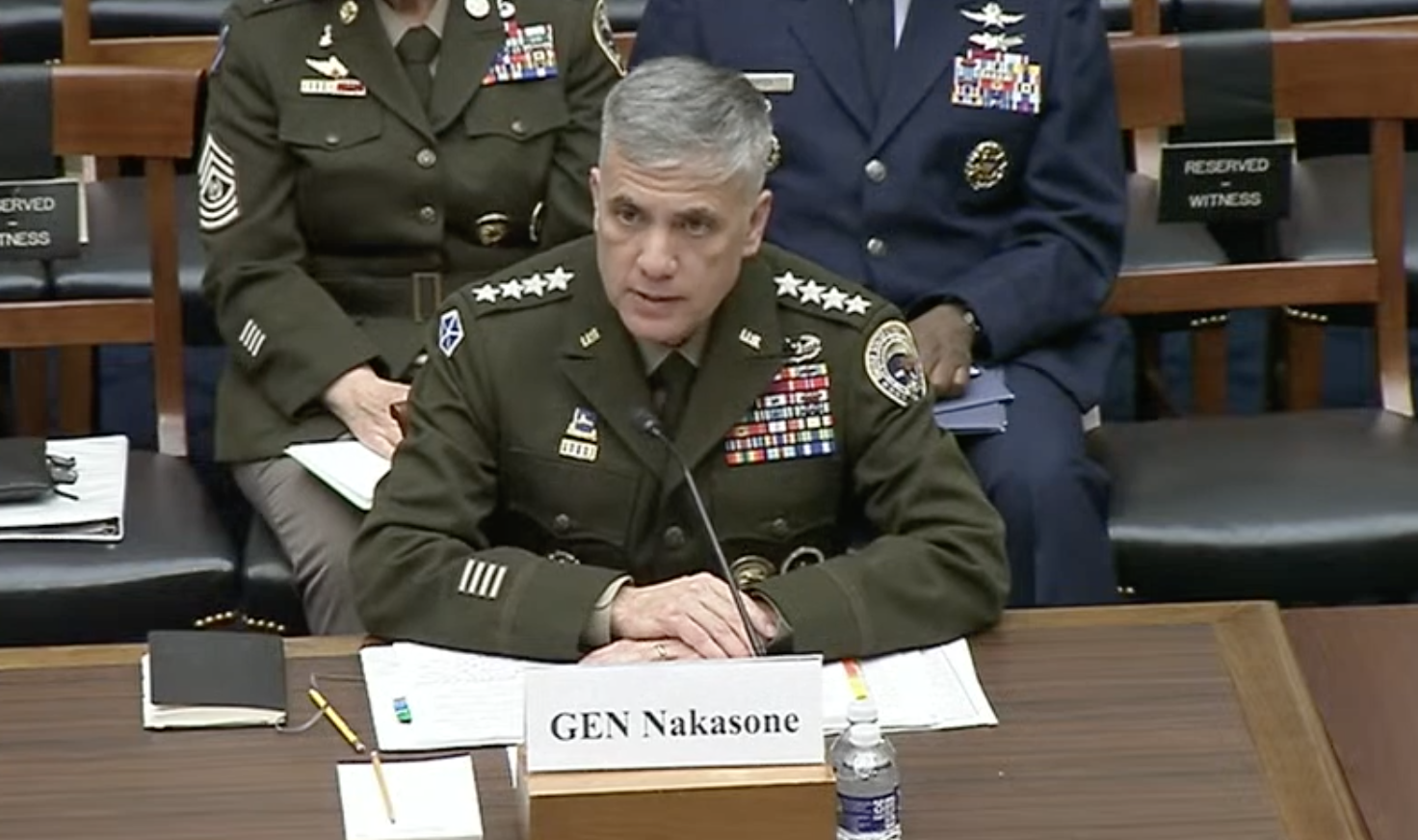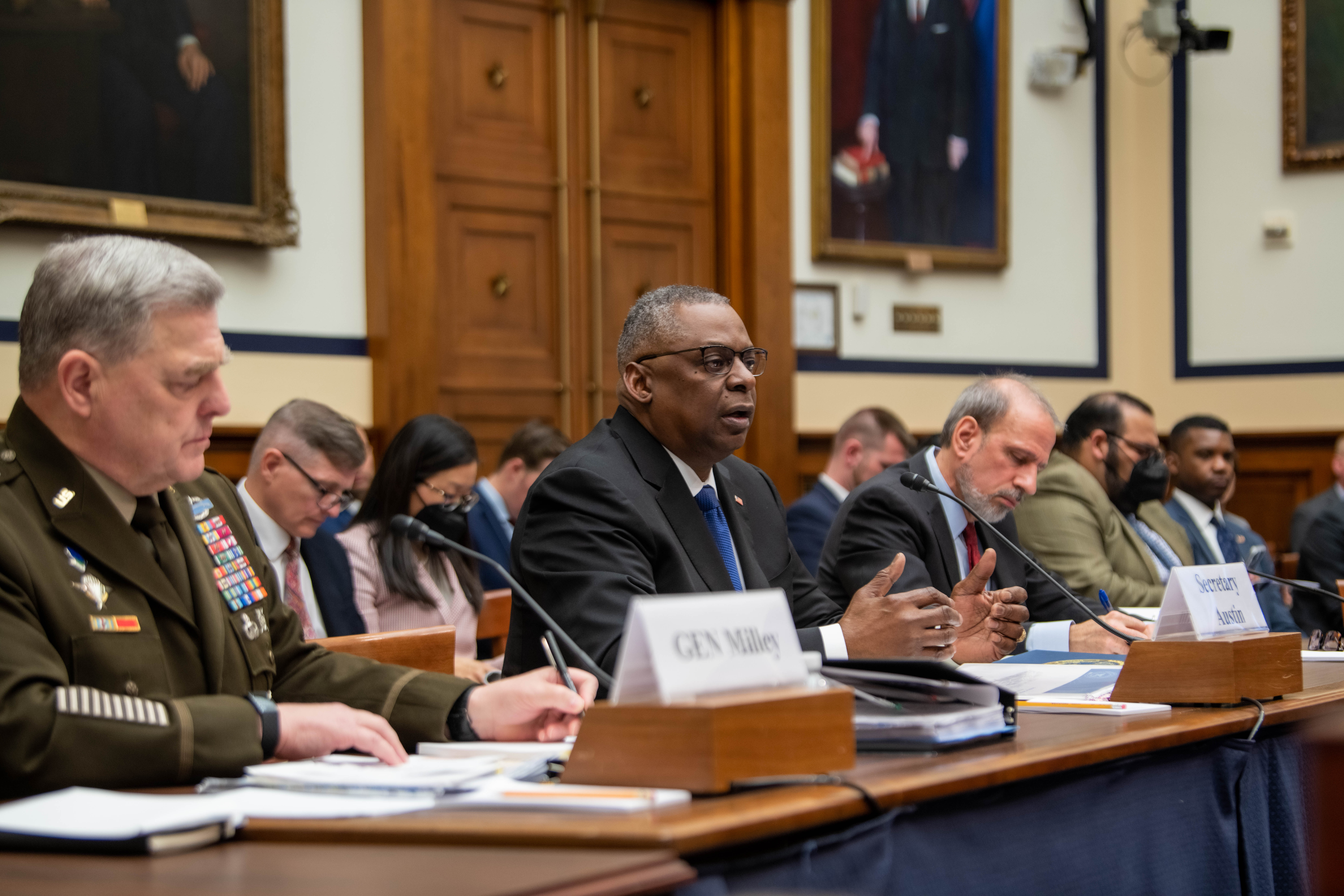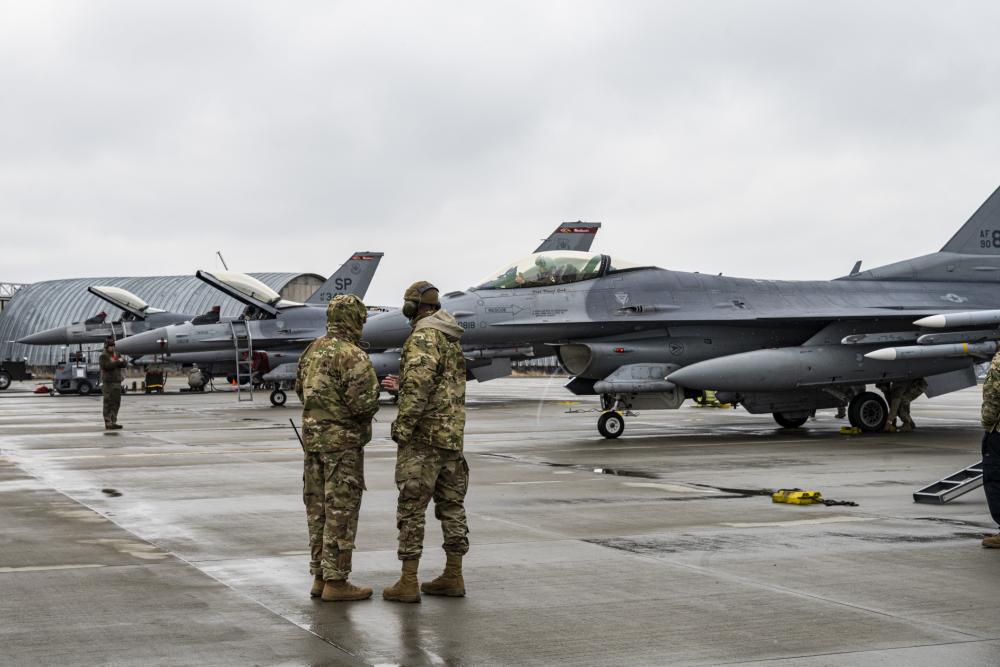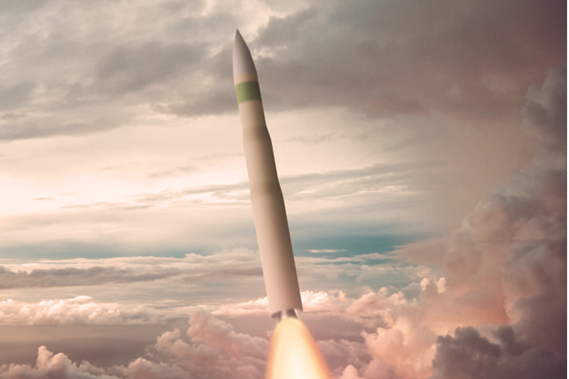The Space Development Agency’s experimental Low Earth Orbit (LEO) data transport constellation will employ bleeding edge new technology in space when it starts to launch later this year. But down on the ground, SDA Director Derek M. Tournear told the Space Symposium April 6, the satellites will employ more familiar tech: The 90’s-era Link 16 tactical communications.
“One of the guiding principles at Space Development Agency is whatever we put up in our transport layer has to be compatible with what the warfighters already have. And that’s why we chose Link 16 … Because there’s no extra user equipment that’s needed to be able to tie into that network.”
It was a virtue born out of necessity, he explained. It would have been impossible to provide the capability starting this year with a requirement for new equipment. “Each of the military services has their own process to buy terminals, and these terminals are already in place. If you wanted to require them to use new terminals, it would be close to a 10-year process [to buy them], and you would get a lot of pushback.”
By contrast, Link 16 technology was already ubiquitous, not only among all the U.S. military services, but across the NATO alliance. “Link 16 is the most proliferated tactical data link that not only the U.S., but all of our allies use,” he added.
Link 16 is a standard for tactical radio technology, which provides secure, hard-to-jam communications for voice, text, and data. It has been used extensively in allied operations in Afghanistan and the Middle East. “It’s what we would use to fight in these [near-peer] conflicts,” as well, Tournear explained. As currently deployed, a Link 16 receiver requires a line-of-sight connection and has a maximum range of 300 nautical miles.
Under a $50 million Air Force Research Lab contract, Viasat have been developing a LEO satellite with Link 16 capabilities, and SDA has previously said that Link 16 connectivity will be one of the capabilities they demonstrate when the first experimental wave of the transport layer constellation is launched later this year.
The constellation is designed to provide reliable low latency communications that could survive in a shooting war. Because LEO constellations move across the sky relative to the earth, dozens or even hundreds of them are needed to offer global coverage. But that characteristic also helps make them more survivable, by comparison with a single satellite in geostationary orbit.
Because the new SDA satellites will employ inter-satellite links, as well as connectivity to the ground, Tournear said, connecting them to Link 16 terminals would give a new global reach to a reliable and widely deployed tactical communications system. “We would enable those data [from a Link 16 terminal] to go over our transport layer, and then be set down directly via the existing tactical data links that are already in place,” he said.
In this way, he added, SDA would start to fulfill the promise of the totally connected military force envisaged in the joint all-domain command and control (JADC2) vision.
“Essentially, we’ll take the existing tactical data links, which are the Link 16 networks, and take that from a regional capability to a full global connectivity, low latency communication path. And so that’s how we would be able to enable this sensor to communicate directly to that shooter and be able to close the kill chain.”

